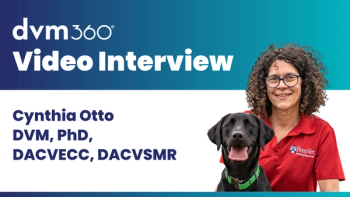
Using capnography with anesthesia

Kristen Ward, RN-BSN, RVT, VTS (Anesthesia/Analgesia), explains why she is passionate about the use of capnography and what her lecture at the 2025 Fetch dvm360 Conference in Nashville covers.
What should veterinary professionals know about capnography? In a lecture at the 2025 Fetch dvm360 Conference in Nashville, Tennessee, Kristen Ward, RN-BSN, RVT, VTS (Anesthesia/Analgesia), a member of the Safe Pet Anesthesia team as well as a nurse in human medicine, shared insights on the use of capnography with anesthesia in pets. In a dvm360 interview, Ward explained why she is passionate about the use of capnography and what her lecture covered.
The following is a transcript of the video:
Kristen Ward, RN-BSN, RVT, VTS (Anesthesia/Analgesia): I'm so glad you asked about capnography, because that is definitely my ‘desert island’ choice of equipment, if I was ever left there.
For me, I want attendees to take away that capnograph is not just a number. It is a continuous, real time insight to ventilation, perfusion and metabolism. We're going to learn how to interpret capnograms, look at and detect problems like hypoventilation, obstruction, things like that.
I want people to know that capnography is an early warning system. This is something that if you learn it and you can see it and use it in your practice, then you're going to be able to anesthetize patients safely and understand where things are changing in a very second to second moment. So that's kind of why it's my desert island piece of equipment.
Newsletter
From exam room tips to practice management insights, get trusted veterinary news delivered straight to your inbox—subscribe to dvm360.






